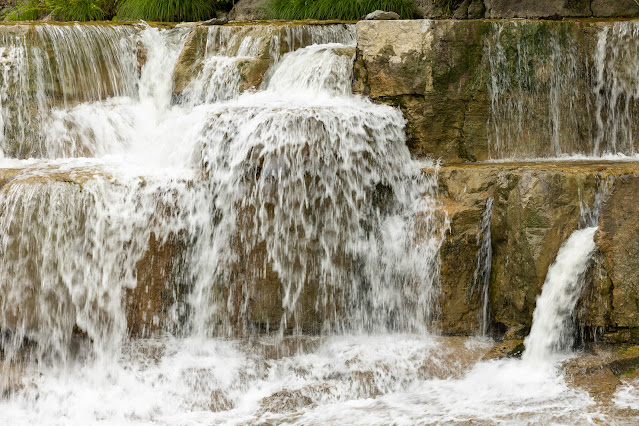Looking at any of my mushroom field guides, I am intrigued by the variety of forms and colors I see. The arrival of some nice September rains whispers to me "mushroom foray." True, a foray is supposed to involve a group collecting fungi for food. I collect only images, and there are few willing to tolerate my spending 30 minutes photographing just one subject. So, it's a solo foray.
One rule for my Seeing in Sixes posts is that I can only include new images. The fun is in the hunt for something new. Let's begin with a decaying tree stump that resembled a mountain peak.
It reminds me of the rugged peaks in Patagonia that I saw in 2019. The little orange mushrooms seem to be ascending the steep slopes.
Recalling how I am attracted to the colors seldom seen, the tender purple color of the next fungi was impossible to bypass. The yellow and light orange leaves also attracted me as they are complementary.
Some would find it humorous to see how obsessed I was with finding the right background. That clearly explains why I do this solo.
Next is a fungi that really excites me when I find one. Coral Tooth-fungus presents itself in many forms as it erupts on the side of a tree.
This one had a nice green growth of what I believe is lichen. It is difficult to capture slightly off-white textures, but luckily the sky was cloudy so there was no sun to blow out the whites.
Next I found a two-for-one to share. Fresh Chanterelles on the right are accompanied by the dried shell of a puffball. (I really got my knees dirty getting down low for this shot.)
The best part here was that nothing had started eating the trumpet edges. The next mushroom was not quite as fortunate. Still, I liked the cap's rich color and the setting in the lee side of a decaying limb.
So, I am now at number six. I wanted to end with this abundant cluster of individual mushrooms. It is uncommon to see so many so closely packed. There are at least twenty-six.
Sometimes, I am asked if a particular fungi is edible. Not important to me. My reply sometimes is on the line of "sure, but you may have a terrible experience a bit later." I am quite pleased with what I can buy in the grocery.
This is what I found in two outings this week. I hope it is entertaining to you. Perhaps it will inspire you to find similar beauty after an autumn rain.
Paul Schmitt












